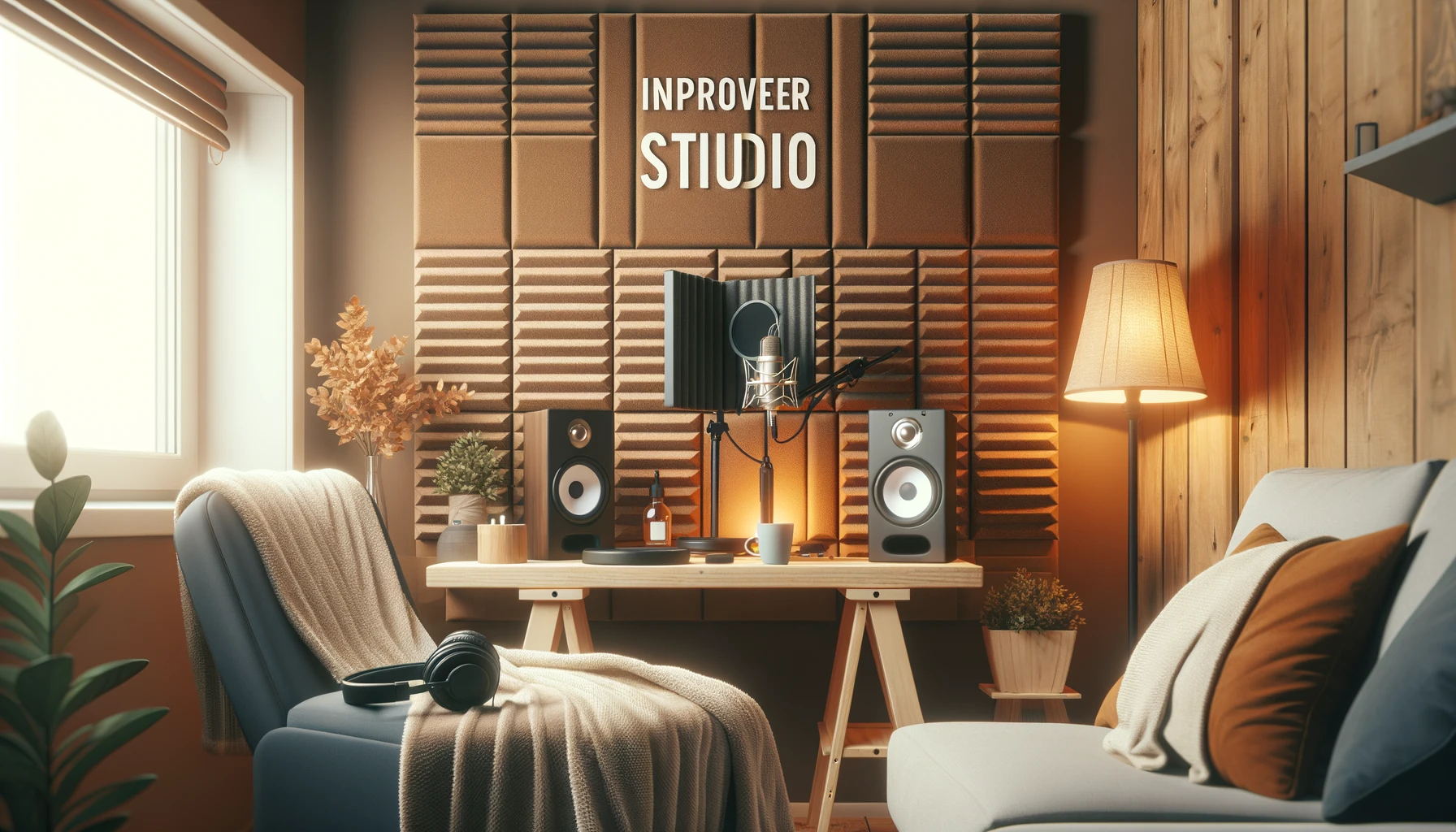If your home voiceover studio sounds boxy and amateur, it may be time for an acoustic makeover.
Adding strategic acoustic panels can control excess reverb, improve audio quality, and achieve a more professional studio environment without breaking the bank.
From materials to placement, let’s dive into how to treat your recording space.
How Do Acoustic Panels Improve Voiceover Studios?

Acoustic panels improve home voiceover studios by absorbing sound reflections that cause unwanted reverb/echo issues.
This allows for clearer, more accurate audio recordings.
We’ll explore the specifics of acoustic panel placement and materials below.
Reduce Reverb and Echo

Unwanted reverb and echo can be a big issue when recording voiceovers at home.
Hard, reflective surfaces like walls and ceilings cause sounds waves to bounce around the room before decaying.
This produces an excessive reverb tail on voice recordings that sounds unnatural and unprofessional.
Acoustic panels absorb these sound vibrations rather than reflecting them.
This reduces unwanted reverb that colors and distorts the voice audio.
Carefully placing panels at reflection points around the room will prevent vocal recordings from gaining this problematic resonant echo effect.
When sound waves strike a hard surface, most of the energy is reflected back into the room rather than being absorbed.
These reflections interfere with the direct sound waves emanating from the voice talent’s mouth.
As more reflections build up in the room, a longer and more colored verb tail is added to the voice.
Every room has a natural reverb determined by its size and the reflective properties of its surfaces.
A room with a lot of glass and drywall can be quite live, while a room filled with furnishings and soft goods will be deader.
Excessive reverb time causes voices to sound distant, muddy and less intelligible.
Improve Audio Quality
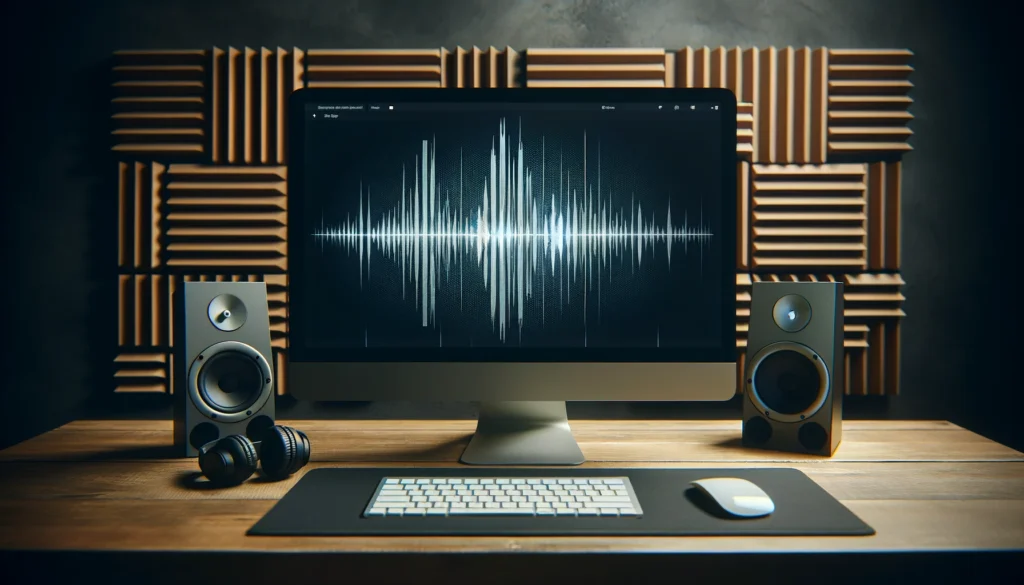
The reverb issues described above lead to all kinds of problems with voiceover audio quality.
The reflections interfere with the direct sound, blurring articulation and consonants through a process called masking.
Long reverb tails muddle the clarity and transparency of the voice by distorting its frequency response.
The recognizability of a voice talent’s unique tone can be diminished.
Issues like plosives, sibilance and mouth noises also become more noticeable with excessive reflections interfering.
This leads to a less clear, professional voiceover sound.
By absorbing sound reflections rather than reflecting them, acoustic treatment achieves a drier-sounding room.
This allows recordings with clearer articulation, greater transparency and a more accurate tonal signature.
The voiceover takes on a more intimate sound with background noise also reduced.
With shorter reverb time, problems with plosives, sibilance and other mouth noises are minimized.
This clearer, cleaner vocal reproduction gives voice talent recordings a more professional, commercial quality.
While some reverb is acceptable, an ideally treated room will simulate appropriate reverb levels for voiceover mixing after the fact.
Control Room Acoustics
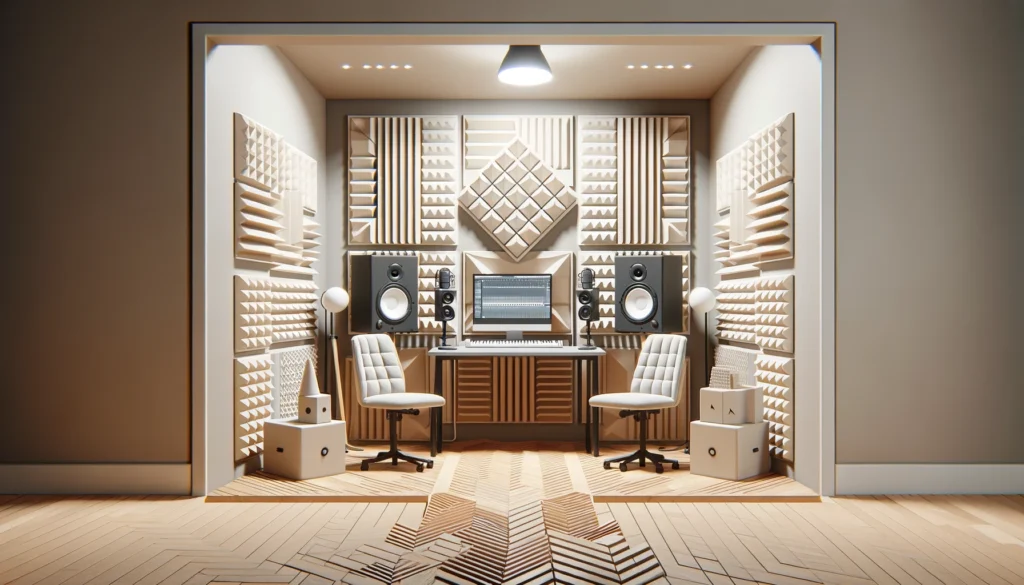
When designing an effective voiceover recording space, principles of control room design should be utilized even in small home studios.
Control rooms are designed not necessarily for completely dead acoustics, but for accurate monitoring and mixing decisions.
Reflections should be controlled so audio can be heard without excessive coloration.
The goal is a relatively neutral sound so that recordings translate properly across different playback systems.
Symmetrical placement of acoustic panels helps to achieve this controlled environment without overdeadening the space.
Diffusion can supplement absorption to scatter sound waves more evenly around the room.
This helps create a sense of space and life important for voice acting while still controlling excessive reflections.
With acoustic treatment, home studios can simulate appropriate reverb times for voiceover work.
This allows judgments of narration pacing, mic technique and processing to be made accurately.
Budget-Friendly Options
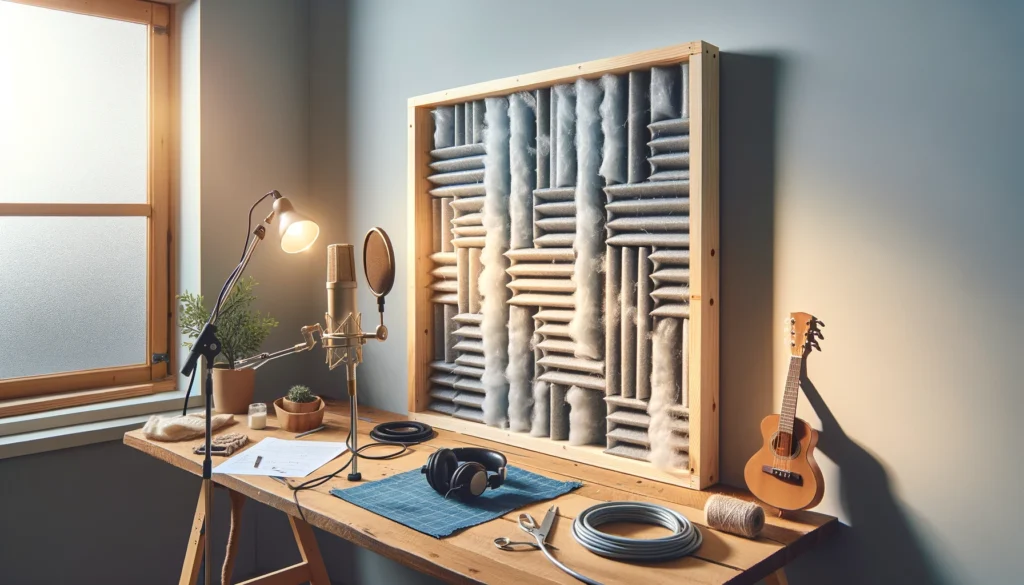
Commercial acoustic panels tailored for recording studios can become quite expensive to purchase and install.
Especially for voiceover artists working from a home studio, budget can be a significant limitation.
An affordable option is to create your own panels using rigid fiberglass insulation boards mounted with a fabric cover in a simple wood frame.
These DIY panels perform comparably to commercial products at a fraction of the price.
Another approach is to strategically allocate budget on the most vital panels, while utilizing less expensive options to supplement.
Focus first on the corner bass traps and panels at the primary reflection points surrounding the voiceover booth.
Then fill in additional areas with lower-cost DIY panels using roofing insulation or recycled materials.
Every studio has different needs and budgets, but some combination of commercial and homemade acoustic treatment is ideal.
Acoustic Panel Materials
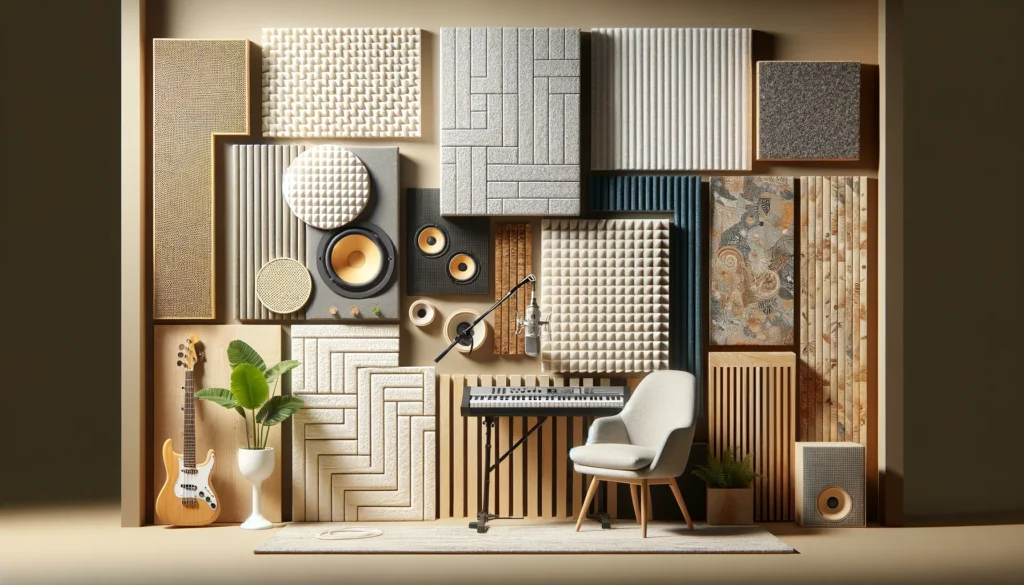
There are a wide variety of materials used in manufacturing acoustic panels, each with their own performance qualities, price points and aesthetic options.
Very lightweight foam panels are inexpensive and come in colorful patterned fabrics.
However foam tends to be less effective at sound absorption, especially in lower frequencies.
Rigid fiberglass boards provide superior absorption across the frequency spectrum, but must be mounted within frames and covered in fabric.
Wood panel systems filled with fiberglass or rockwool offer excellent broadband absorption and customized looks by finishing the wood.
Modern printed fabric wraps enable more decorative appearances for panels.
And newer membrane-type absorbents using unique materials can provide transparency for window areas.
In vocal booths diffusion may supplemented absorption via geometric sound scatterers.
There are many solutions to balance performance, aesthetics and budget.
For voiceover studios, broadband absorption is key to controlling reverb without altering voice quality.
Dense rigid fiberglass panels deliver consistent absorption but still allow some liveliness.
Wrapping panels in printed fabrics offsets industrial looks while celebrating your brand.
DIY wood panel frames filled with rockwool or recycled jeans provide budget options.
Assess acoustic needs, then get creative blending treatments for an effective yet attractive voiceover space.
Reduce Reverb and Echo
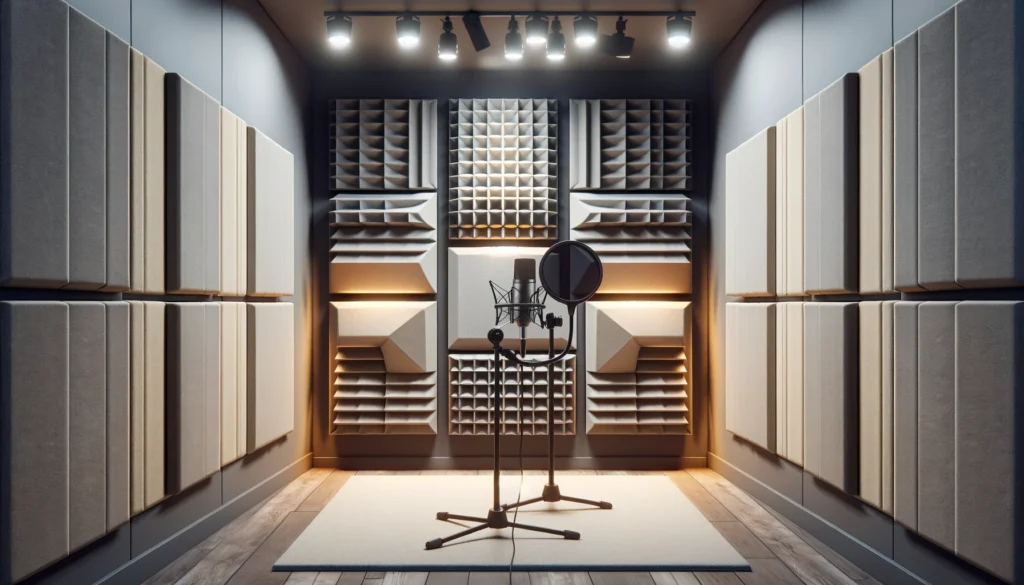
Hard, reflective surfaces like walls and ceilings cause sounds waves to bounce around the room before decaying.
This produces an excessive reverb tail on voice recordings that sounds unnatural and unprofessional.
Acoustic panels absorb these sound vibrations rather than reflecting them.
This reduces unwanted reverb that colors and distorts the voice audio.
Carefully placing panels at reflection points around the room will prevent vocal recordings from gaining this problematic resonant echo effect.
Improve Audio Quality
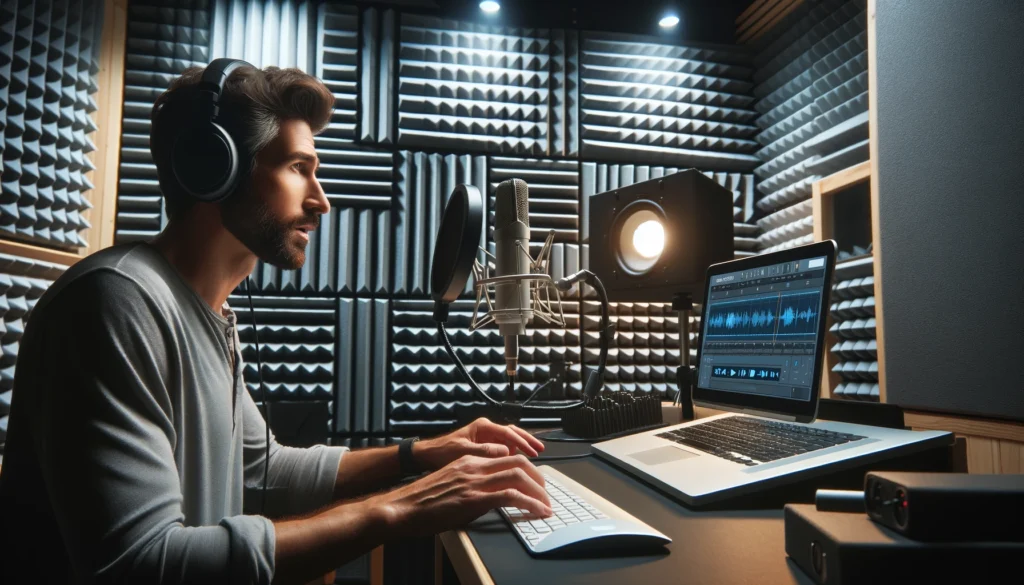
By absorbing sound reflections rather than reflecting them, acoustic treatment achieves a drier-sounding room.
This allows recordings with clearer articulation, greater transparency and a more accurate tonal signature.
The voiceover takes on a more intimate sound with background noise also reduced.
With shorter reverb time, problems with plosives, sibilance and other mouth noises are minimized.
Control Room Acoustics

Symmetrical placement of acoustic panels helps to achieve this controlled environment without overdeadening the space.
Diffusion can supplement absorption to scatter sound waves more evenly around the room.
This helps create a sense of space and life important for voice acting while still controlling excessive reflections.
Budget-Friendly Options

An affordable option is to create your own panels using rigid fiberglass insulation boards mounted with a fabric cover in a simple wood frame.
These DIY panels perform comparably to commercial products at a fraction of the price.
Another approach is to strategically allocate budget on the most vital panels, while utilizing less expensive options to supplement.
Acoustic Panel Materials
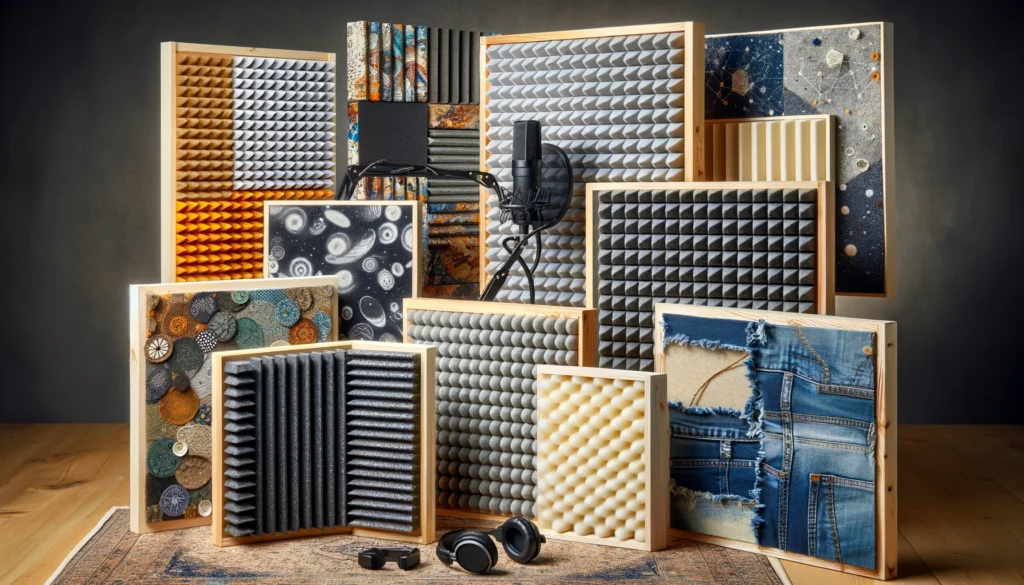
For voiceover studios, broadband absorption is key to controlling reverb without altering voice quality.
Dense rigid fiberglass panels deliver consistent absorption but still allow some liveliness.
Wrapping panels in printed fabrics offsets industrial looks while celebrating your brand.
DIY wood panel frames filled with rockwool or recycled jeans provide budget options.
Conclusion
Controlling room acoustics is crucial for professional-grade vocal recordings.
Strategically placed acoustic panels absorb problematic reflections that lead to distracting reverb/echo issues.
DIY sound treatment options make achieving a quality home voiceover studio achievable at any budget.
Get creative blending materials and placement to carve out an optimized recording sanctuary.
